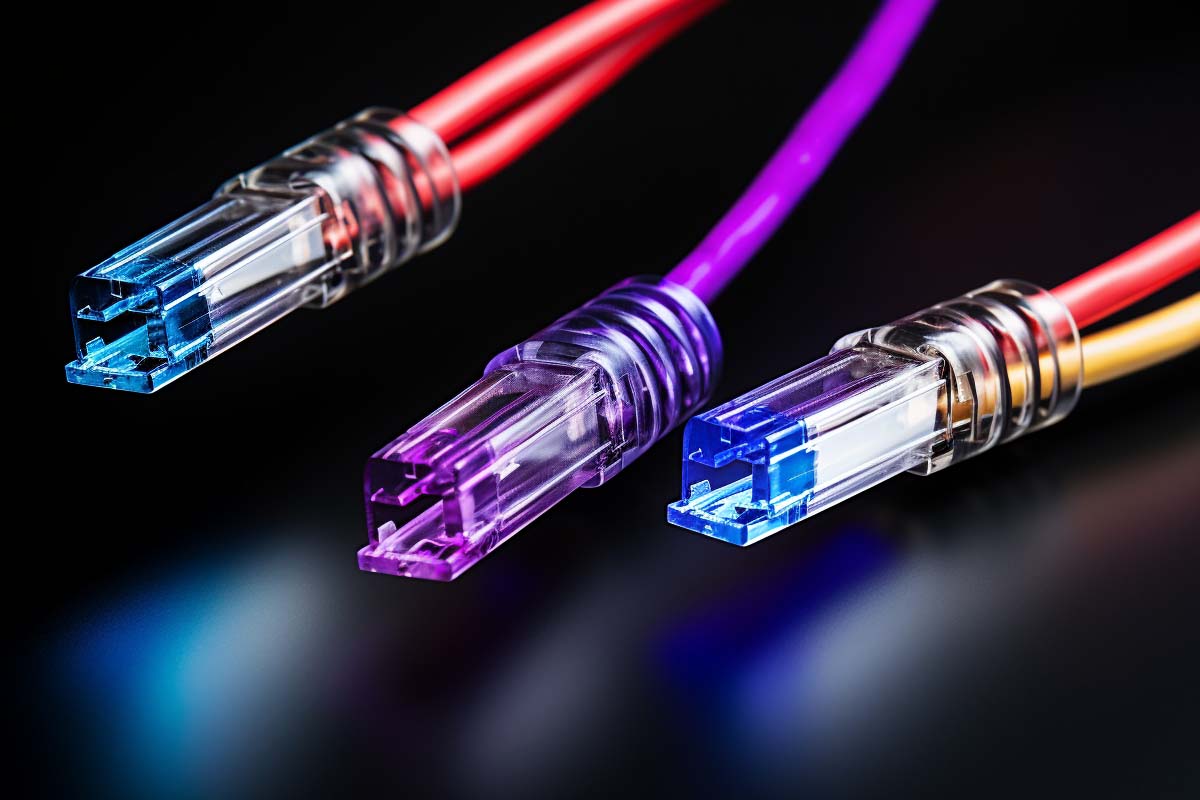What Is a Host?
Definition: HostA host in the context of computer networks refers to a computer or other device connected to a network that provides data, services, or resources to other devices or

Let’s dive in and discuss Cat6 vs Cat7. In the dynamic world of Ethernet cables, understanding the nuances between Cat6 and Cat7 can feel like trying to solve a digital Rubik’s Cube. But fear not, as we delve into the intricate world of these cables, we’ll make it as straightforward as choosing your favorite pizza topping (though admittedly, with a bit more technical jargon).
Imagine Cat6 as the Usain Bolt of Ethernet cables — a significant upgrade from its predecessors. It’s like having a sports car in the world of gigabit networks: fast, efficient, and reliable. Here’s why:
In essence, Cat6 is the sweet spot for modern networks, balancing cost and performance like a tech-savvy Goldilocks.
This comprehensive training series is designed to provide both new and experienced network administrators with a robust skillset enabling you to manager current and networks of the future.
Cat7 is the James Bond of Ethernet cables — sophisticated, high-tech, and a bit mysterious. It’s what Cat6 would dream of becoming if it hit the gym and got a tech makeover. Here’s the scoop:
While Cat7 is pushing boundaries, it’s like buying a Formula 1 car when you’re only driving in the city — impressive, but potentially overkill for most needs.
Here’s a comparative table highlighting the key differences between Cat6 and Cat7 Ethernet cables:
| Feature | Cat6 | Cat7 |
|---|---|---|
| Speed | Up to 10Gbps | Up to 10Gbps (potentially higher with suitable equipment) |
| Bandwidth | 250MHz | 600MHz |
| Crosstalk Protection | Enhanced due to tighter twisting of wires | Superior, with individual shielding for each wire pair |
| Interference Handling | Good, relies on wire twists to reduce EMI | Excellent, with additional shielding against EMI |
| Suitability | Ideal for most modern office and home networks | Suited for advanced applications and high-interference environments |
| Cost | More affordable, budget-friendly | Higher cost due to advanced features and shielding |
| Future-Proofing | Suitable for current and near-future needs | Provides additional headroom for future technologies |
| Compatibility | Backward compatible with Cat5/Cat5e | Backward compatible with Cat6/Cat5/Cat5e |
| Ideal Use Case | General networking, home and office use, media streaming | High-density networking environments, data centers, high-speed applications |
Both Cat6 and Cat7 hit the 10Gbps mark, but Cat7 is like having a larger gas tank for future high-speed races. With its 600MHz frequency, it’s ready to surpass the 10Gbps threshold, given the right networking pit crew.
For modern networks, it’s like choosing between a sports sedan (Cat6) and a race car (Cat7) — both are fast, but one is ready for the racetrack.
Here, Cat7 plays its trump card with individual shielding for each wire pair, akin to each wire having its personal space in a crowded room. This shielding is Cat7’s secret sauce in high-interference scenarios.
Cat6, meanwhile, relies on wire twisting like a ballet dancer, elegantly minimizing interference. It’s sufficient for most networks, but in a high-EMI dance party, Cat7’s shielding might be the better dance partner.

Targeting Cisco specific Networks, this Cisco Network Engineer Training series provides in-depth curriculum for those wanting to learn networking basics and advance his/her career opportunities as a Cisco Network Engineer.
When it comes to cost, Cat6 is the budget-friendly option, offering 10Gbps speeds without breaking the bank. It’s like opting for an economy-class ticket with a business-class experience.
Cat7, on the other hand, is the premium choice, costing more but offering a first-class ticket to future networking capabilities. It’s an investment in future-proofing, like buying an electric car in a world slowly moving away from gasoline.
Choosing between Cat6 and Cat7 depends on your current needs and future aspirations. For most, Cat6 is a cost-effective solution, ready to handle today’s demands. But for those looking to stay ahead of the curve, Cat7 is the forward-thinking choice, ready for the high-speed demands of tomorrow.
So, whether you’re a casual surfer or a data-hungry tech enthusiast, there’s a cable out there that’s just right for your digital appetite. Remember, in the world of Ethernet cables, it’s not just about speed; it’s about finding the right fit for your network’s personality.
Cat6 cables offer speeds up to 10Gbps with a bandwidth of 250MHz and are suitable for most modern network needs. Cat7 cables also support speeds up to 10Gbps, potentially higher with suitable equipment, and have a higher bandwidth of 600MHz. Additionally, Cat7 provides superior crosstalk protection with individual shielding for each wire pair.
Both Cat6 and Cat7 support up to 10Gbps speeds. However, Cat7 is capable of supporting higher frequencies (up to 600MHz compared to Cat6’s 250MHz), which theoretically allows for faster data transmission speeds with the appropriate network equipment.
Yes, Cat7 cables are generally more expensive than Cat6. The higher cost is due to the advanced construction of Cat7 cables, including additional shielding for each wire pair, which provides better protection against crosstalk and electromagnetic interference, and supports higher frequency ranges.
Yes, Cat7 cables are backward compatible with Cat6 and even Cat5/Cat5e network setups. However, to fully utilize the enhanced capabilities of Cat7 cables, such as higher frequency and better shielding, compatible network equipment that supports these features is necessary.
The choice between Cat6 and Cat7 depends on your specific needs and future-proofing considerations. Cat6 is generally sufficient for most home and office networks, offering a balance of speed, performance, and cost. Cat7, while offering higher bandwidth and better shielding, is more suitable for environments with high levels of electromagnetic interference or for networks where future-proofing for emerging higher speed standards is a priority.
Lorem ipsum dolor sit amet, consectetur adipiscing elit. Ut elit tellus, luctus nec ullamcorper mattis, pulvinar dapibus leo.
$49.99 Original price was: $49.99.$16.99Current price is: $16.99. / month with a 10-day free trial
Definition: HostA host in the context of computer networks refers to a computer or other device connected to a network that provides data, services, or resources to other devices or
Definition: Asymmetric MultiprocessingAsymmetric Multiprocessing (AMP) is a computing architecture where multiple processors, each potentially of different capabilities or roles, are used within a system but do not share tasks equally.
Definition: Virtual DOMA Virtual DOM (VDOM) is a programming concept implemented in libraries such as React to improve the efficiency and speed of web application updates. It is a lightweight
Definition: Enterprise ArchitectureEnterprise Architecture (EA) is a strategic planning framework that organizations use to align their business vision and strategies with their information technology (IT) infrastructure, processes, and projects. It
Definition: Ternary OperatorThe ternary operator is a conditional operator that provides a shorthand way of expressing conditional statements in many programming languages. It is called “ternary” because it involves three
Definition: Eventual ConsistencyEventual consistency is a consistency model used in distributed computing to describe a system where, given enough time without new updates, all replicas in the system will converge
Definition: Cybersecurity InsuranceCybersecurity Insurance, also known as cyber liability or cyber risk insurance, is a type of insurance product designed to protect businesses against the financial losses resulting from cyber
Definition: User ModeUser mode is a privileged level in operating systems designed to restrict access to protected areas of a computer’s memory and limit the execution of certain instructions. It
Definition: Public KeyA public key is one half of a cryptographic key pair used in public key cryptography, which enables secure data exchange over insecure communication channels. It works alongside
Definition: Public Key CryptographyPublic Key Cryptography, also known as asymmetric cryptography, is a cryptographic system that uses pairs of keys: public keys, which may be disseminated widely, and private keys,
Definition: PhishingPhishing is a cyber attack that uses disguised email as a weapon. The goal is to trick the email recipient into believing that the message is something they want
Definition: Python PandasPython Pandas is an open-source data analysis and manipulation tool built on top of the Python programming language. It offers data structures and operations for manipulating numerical tables
ENDING THIS WEEKEND: Train for LIFE at our lowest price. Buy once and never have to pay for IT Training Again.

Get ready for the updated 220-1201 & 220-1202 exams with our brand-new CompTIA A+ training—designed to help you pass with confidence and start your IT career strong. Access this course and over 2,900 hours of expert-led IT training when you sign up for any of our All-Access Passes. Don’t miss out—enroll now and start learning today!